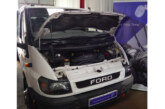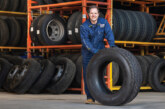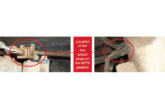If the previous winter and spring are reliable indicators, the UK could soon be heading back to a prolonged spell of wet weather. This is an appropriate time to perform some essential axle checks, suggests ZF Aftermarket, and for a reminder about the possibility and implications of water ingress after driving through standing water.
Breather system checks
ZF axles are sealed against water splash experienced during normal weather and road conditions, but are not designed to have fording ability. Negotiating flooded roads or shallow fords can therefore cause water to enter the axle. This occurs most commonly via the axle’s breather system, usually a flexible pipe that runs from the axle housing to a dry area of the chassis.
In ZF Aftermarket’s experience, the breather system is unlikely to receive much attention during routine vehicle servicing, with some technicians admitting to being uncertain about its function. Checking that it is in an undamaged condition, clear of blockages and correctly routed to a dry area should be considered an important part of the maintenance schedule. The company therefore recommends that the following items are inspected to prevent unnecessary problems and expense in the future:
Check that the breather hose is present, undamaged, and free of blockages. ZF typically specifies tubing of 6 to 8mm diameter, routed to avoid chafing and ending in a hollow space protected from dirt and spray water.
Ensure that breather hose connections, such as the elbow adaptor where the hose joins the axle case, are intact and secure (see below).

Check that the end of the breather hose is higher than the connection to the axle, and the hole where it enters the body cavity is sealed with silicone sealant (see below).

Inspect axle seals
Investigate any lubricant seepage from hub and pinion seals, which would indicate that they are damaged or worn. The seals are vulnerable to water entry, not only when traversing floods or fords, but also during cleaning; these areas are not designed to withstand persistent, intensive water impact. Steam cleaning or pressure jetting in the vicinity of the breather pipe or sealing areas should be avoided on all axles for this reason.
Take care when towing
Apart from exposure to standing water, it’s important to be aware of other, less obvious water entry possibilities. If the vehicle needs to be towed, it’s common practice to disconnect one, or preferably both, of the half shafts or the propshaft to prevent transmission damage. If this is the case, always ensure that exposed output flange shafts are covered to protect them.
Diagnosing water ingress
Water ingress is often only discovered during oil changes, although in some cases the onset of rust may be evident at one of the half shaft flanges (see below) or at the wheel bearing (see below).
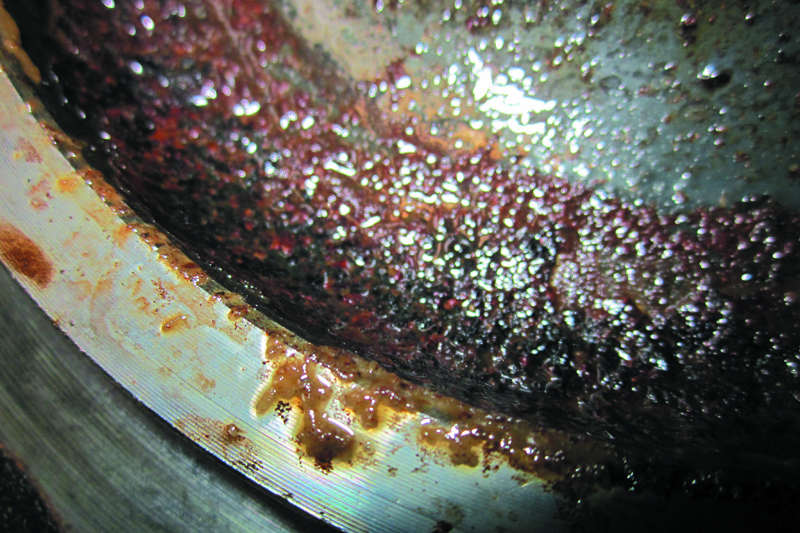
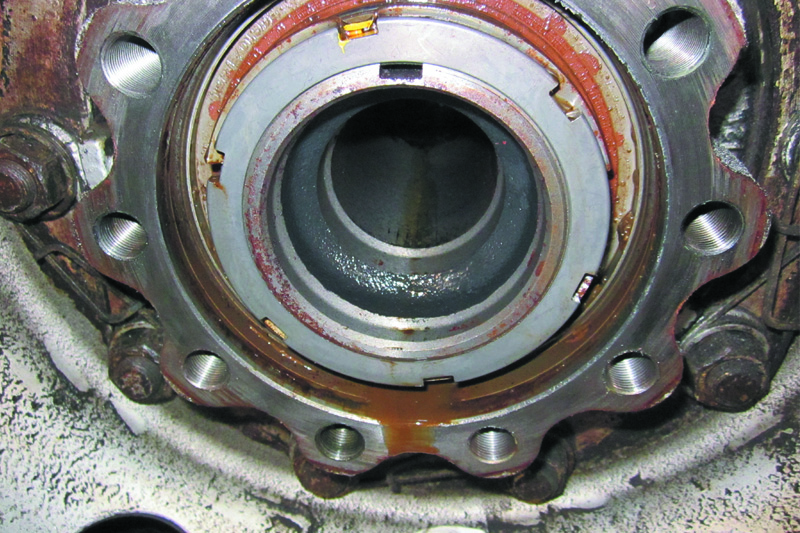
Where this occurs, it will quickly compromise the ability of the lubricants within the axle to provide corrosion protection and wear prevention. The axle will begin to corrode inside the axle case (see below), with the contamination causing pitting of the bearings and/or scuffing to the crown wheel and pinion or the differential, accelerating wear.
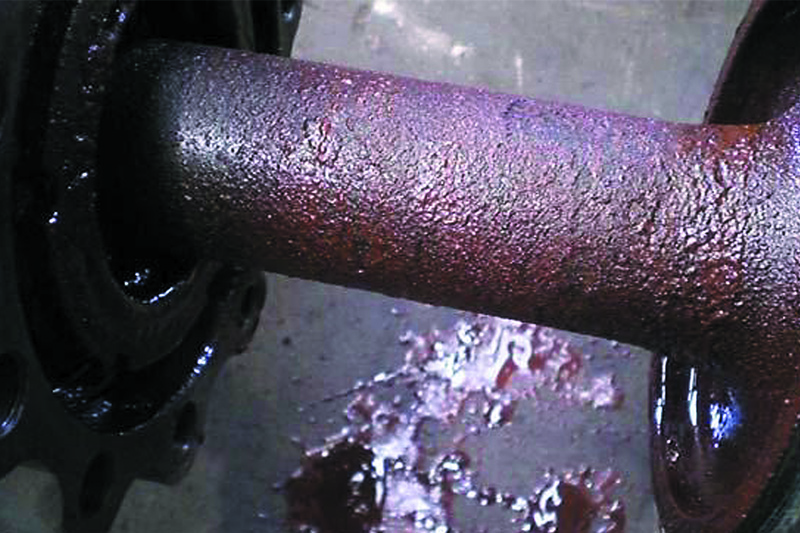
The first sign of such damage is usually noise, although axles have been known to lose drive or suffer bearing collapse without any prior warning signals. This indicates that the axle internals have suffered severe damage – the inevitable result being a hefty repair bill. If water is suspected to have entered the axle, this should be brought to the immediate attention of the vehicle operator, with a recommendation that the oil be changed, or at least sampled in the first instance to check for contamination.
Oil sampling and lubricant replacement
Oil sampling is an excellent way of monitoring axle condition to gauge potential lifespan, and can also provide early warning of the presence of water. Many operators regularly oil sample engines and gearboxes as part of their maintenance regime, but the axle is often overlooked. If irregularities in the axle oil are detected, an oil change must be carried out. In this situation it is essential to also check the grease filling in the hub carrier, in the inner rings of the compact wheel bearing and in the flange shaft. When replacing lubricants, precautions
should be taken to avoid introducing water during the operation. Drums of lubricant kept outside should be stored in a roofed area to prevent pollution with rainwater, and filling and transfer equipment should be checked for water contamination before use.
Lubricant specifications
A ZF axle should always be serviced and maintained in accordance with ZF’s and the individual vehicle manufacturer’s guidelines. Adhering to the correct oil specification and observing the replacement intervals is crucial for long and trouble-free axle life. For ZF axles, visit www.zf.com/lubricants or consult the company’s technical services team for the correct specification of ZF or other manufacturers’ approved lubricants to use. Mineral oils typically need to be changed at 60,000 miles or yearly intervals, whichever occurs sooner, and hub greases generally need renewing every 500,000 miles or four years.
Following the advice above will help to ensure that fleet operators can approach winter driving with greater peace of mind. For other routine servicing operations, ZF Aftermarket also supplies a comprehensive range of replacement braking, chassis, steering and suspension parts from its Lemförder, Sachs and TRW brand portfolio.







